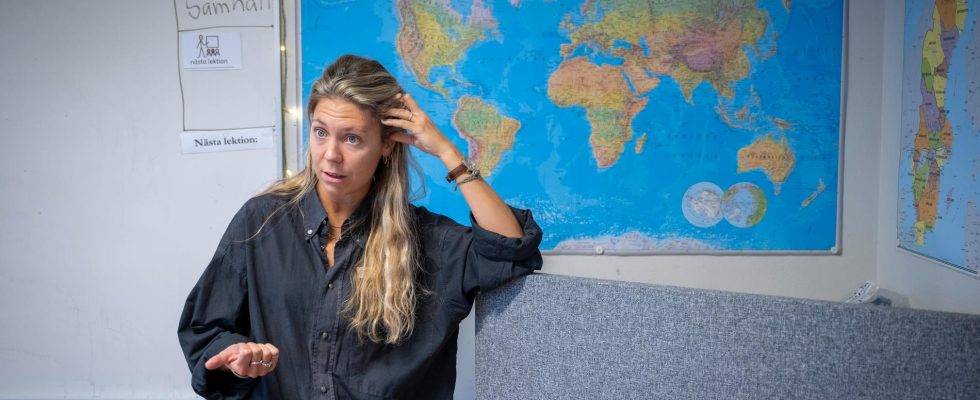Save the article
1 / 3Photo: Johan Nilsson/TT
Which side are you on in the conflict between Israel and Palestine?
Teachers in Malmö’s classrooms are repeatedly asked the question by students during the flare-up of the conflict.
– There are a lot of emotions that come out from the students, says high school teacher Tilda Malmros.
At Söderkullaskolan in Malmö, media and source criticism are on the agenda, but regardless of the subject, the students draw parallels to the ongoing war between Israel and Hamas.
– Now when we talk about source criticism, they ask how many children died in Israel and who was behind the explosion at the hospital in Gaza. It may have seen something on Tiktok and wants to know if it is true, says teacher Tilda Malmros.
In Malmö, it is not unusual for students to have strong ties to the Middle East. Therefore, there is concern that the conflict will create ripples, causing more anti-Semitism and Islamophobia in the city’s classrooms.
Difficult balance
On one of the walls in the classroom in Söderkullaskolan hangs a poster with the flags of the world. The Palestinian flag is missing. On the Israeli flag, someone has put a cross and written “not genuine”.
– Several teachers have been afraid to address the issue. It can be a difficult balancing act. You don’t want to escalate the conflict or undermine the students’ feelings, says Tilda Malmros.
The need for support among teachers already arose when the conflict escalated in May 2021. The city of Malmö responded by producing a support material that contains facts and teaching methods.
– The conflict is spreading throughout Sweden and it can be difficult to manage. That’s why we produced this material, but it’s up to each teacher to decide how they want to use it, says Björn Westerström, teacher and leader of the work at Malmö city’s educational activities.
Students are sad
The support material was ready last autumn and this autumn it has been downloaded extensively by teachers around Malmö.
Tilda Malmros is one of them, and today she feels prepared to respond to the students’ feelings and questions.
– I have students who have relatives in Palestine and then it is clear that there is a need to talk about what is happening. Some have been very sad and had an extra need for it, she says and continues:
– I usually let it be emotional. I don’t go in and change someone’s opinion and story. At the same time, I emphasize that there are more narratives. I tell you about nuances so as not to strengthen the feeling of “us and them”.
Deliberately provoking
She herself has visited Israel and parts of the West Bank as part of Malmö city’s development project, which she thinks creates credibility among the students.
– I also try to explain that not all Israelis think the same way, and that not all Palestinians support Hamas, and that there are many who work for peace together.
As an example, she usually tells about a Jewish woman she met during her trip to the West Bank.
– She was one of the strongest voices against the settlements. Some are surprising, but these personal stories often stick with the students. Some may say things to deliberately provoke, but the vast majority think it’s “super cool” that I’ve been there and are very curious.
Not buying neutrality
But some have a hard time buying her neutrality in the conflict.
– I usually say that I don’t take sides and that you don’t need to either. Some people think I just say that because it sounds good. But I try to explain that I start from the human perspective. It is just as terrible that children die in Israel as in Gaza.
– Then you usually get the thorns down a bit, and that usually leads to very good thoughts and suggestions on how to resolve the conflict.
